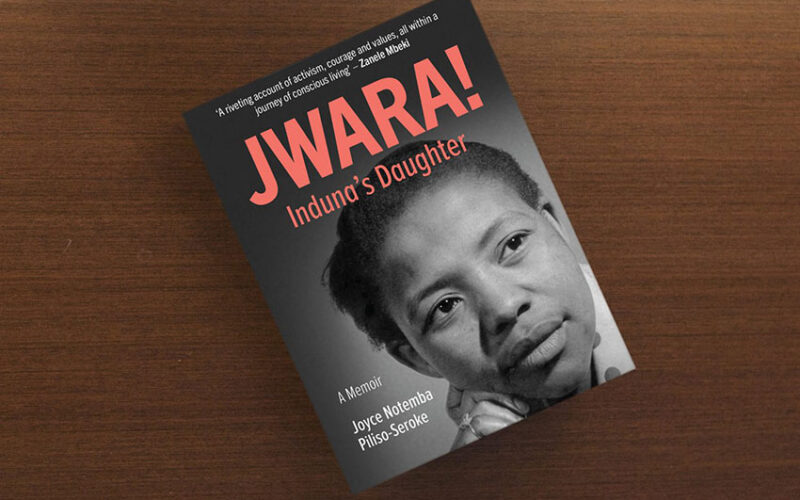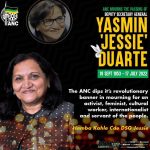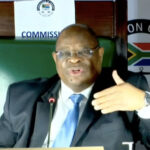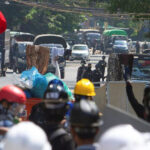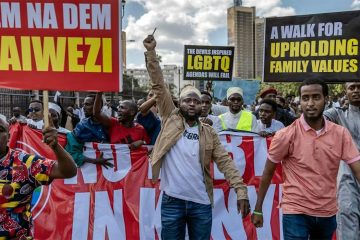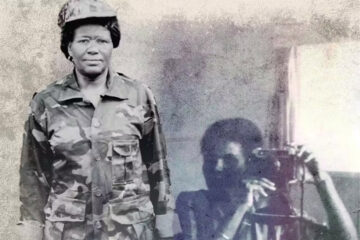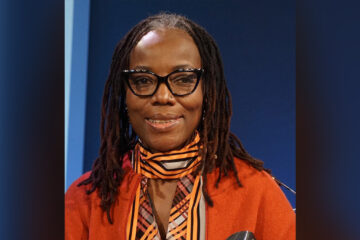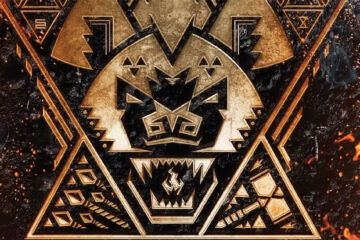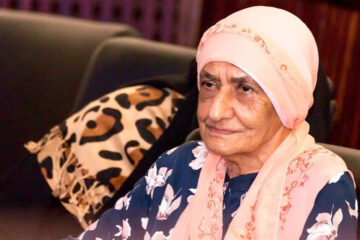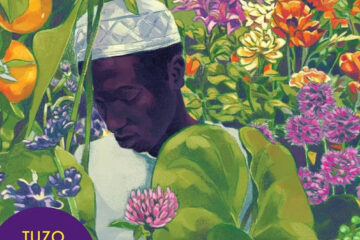JOYCE PILISO-SEROKE
ACTIVIST and community organiser Joyce Piliso-Seroke fought overseas and at home in the struggle against apartheid, eventually joining the Commission for Gender Equality in 1999.
I was still working for the Truth and Reconciliation Commission (TRC) when Thenjiwe Mtintso resigned from the Commission for Gender Equality (CGE) on 1 April 1998 to take up the full-time political position of deputy secretary-general of the ANC. She had completed just two years of her five-year term. Since I had vowed to continue my involvement in South Africa’s transitional process beyond the end of the TRC lifespan, I was excited to be nominated by Yasmin Sooka, one of the TRC commissioners, to take up the vacant position of CGE chairperson. I had worked closely with Sooka in the Human Rights Violations Committee, which she had chaired, and so she believed that I was well qualified for the position. Importantly, I had a profitable experience in women’s and gender issues. I had steered women’s empowerment programmes in the Young Women’s Christian Association, and as a board member of the Women Development Foundation (WDF), I had been involved in the structures that facilitated the empowerment of the first women parliamentarians and later women councillors of local government. Also, I had gained valuable insights regarding the principles of the Convention on the Elimination of All Forms of Discrimination Against Women (Cedaw) through my interactions in the international women’s meetings I had attended. Thus, I was confident to accept my nomination for the position and tackle the challenges ahead.
Consequently, after my nomination was accepted, I was among many candidates who were interviewed by the Parliamentary Committee representing various political parties. After the interviews, the procedure was to send the committee’s recommendations to the president, who would then appoint the chairperson. I left Parliament with a sense of expectation for the opportunity to serve an organisation that would give hope to millions of women, mostly Black and confined to rural areas, who had borne the multiple burdens of gender, racial and class discrimination.
But my expectations turned sour, for I did not hear from the committee for a full year and found myself unexpectedly at a loose end. So I engaged in meaningful programmes through my professional memberships on boards of organisations, corporations and trusts – including the WDF, Read Educational Trust, the Eskom Electricity Council and Be Part of the Miracle Trust. My involvement with those programmes allowed me to contribute further to the process of South Africa’s transformation.
Only in April 1999 did I receive confirmation of my appointment, a full year after Mtintso had resigned from the CGE. I was congratulated by many friends, one of whom had perceived the CGE to be the Cinderella among Chapter 9 Institutions. She warned me not to be naïve and think that my journey along this path would be easy. A concern at the time among gender activists was the glaring disparity in government allocations for the CGE compared with other commissions, and they had concluded that Parliament was ambivalent about its commitment to gender transformation. Nevertheless, I felt honoured to succeed a woman of Mtintso’s calibre and was prepared to confront the challenges ahead.
The CGE began operating in 1997 and had squatted in one of the offices of the Department of Justice in Pretoria with no proper base, and it operated without administrative staff, telephones or office furniture. The chairperson and her commissioners had occasionally worked from their homes and had to use their own laptops. The CGE spent a lot of its time and energy trying to secure a budget. Initially, it was allocated R2.059 million and, after considerable lobbying, was finally given an additional R2.36 million, which brought the total for the 1997/98 financial year to R4.4 million. But that was insufficient to pay the salaries of the 11 full- and part-time commissioners, let alone the staff provided for in the commission’s enabling Act. One could sense that the CGE had not been given the same recognition as the other Chapter 9 Institutions. It was only after its budget was increased to R10.2 million the following year that it was able to move to proper offices in Braamfontein, Johannesburg in early 1998 and appoint a chief executive officer and heads of departments.
Initially, it was hard going, as many people were ignorant about gender equality, and in some quarters, racism was seemingly accorded more attention. Hence, some critics felt that there was no need for a stand-alone commission for gender equality. They believed that the Human Rights Commission should serve as one umbrella human rights and equality commission, even though submissions to the Constitutional Assembly from a broad range of stakeholders within South Africa, including political parties in Parliament, the ANC, Democratic Party, Inkatha Freedom Party and Freedom Party had supported the establishment of the CGE. In their support, those groups had argued that gender priorities would lag behind the national priorities for transformation and that the CGE’s participation would add value to the dire public education drive that was needed to address the absence of a democratic and human rights culture and the prevailing ignorance about gender equality.
Then again, the groups within the women’s movement had learned lessons from their counterparts abroad that, after independence, women were left out and not considered in decision-making structures and that when there were “one-stop” commissions catering for all human rights issues, those of gender equality acquired a low status. As a result, they were concerned that, unless our country had a focused institution such as the CGE, the issues of gender equality would not be adequately addressed but subsumed and not acknowledged in their own right.
At that time, while some NGOs had gender-sensitive programmes, the government departments, labour and business structures had no gender policies and plans, and those that existed were under-resourced.
The Public Protector and the Human Rights Commission, two of the six institutions created in terms of Chapter 9 of the Constitution, were already operating when the CGE came into the picture. Although there had been valid reasons for the establishment of those commissions, there had been critics who opposed their existence. The media, in particular, had criticised them for being wasteful and duplicating each other’s different functions. Although those commissions shared similar broad objectives, there were ways in which they could complement each other in the field of public education and information because all three had the same function: to promote and protect human rights.
Furthermore, the CGE was expected to transform a society firmly rooted in patriarchy: many men perceived gender equality as an attempt to destroy African tradition, so the CGE was up against an explosion of women stereotypes in the country’s languages, education system, media, popular culture and practice. Many people did not have an understanding of what gender equality meant, and women were subservient to their husbands and had no power to transact in business without their participation or consent. I recall the time when women could not buy furniture for their homes without the permission of their husbands: their husbands had to sign the hire purchase agreements before they could finalise a transaction. It was ironic that even though the wives, including teachers, nurses and doctors, were earning an income and their spouses were unemployed, the husbands were still required to sign.
On top of that, as mentioned, women were subjected to customary law and were lifelong dependents under the guardianship of their husbands, sons or other male relatives. I remember how condescending it had been for me to ask my husband, Theo Seroke, to provide me with his written permission before I could apply for a passport to travel outside the country. I wondered what I would have done had he refused to grant it. In the absence of a husband, it was humiliating for a woman to have to approach her teenage son for permission. As a result, some women, in desperation, resorted to clandestine means of acquiring a passport.
Another daunting issue for the CGE was the high levels of violence against women, particularly rape and domestic violence. The majority of poor Black women living in rural areas, on farms and in shack settlements in urban areas were the most susceptible, and many of them did not have access to resources and other benefits of democracy.
That was the gloomy environment into which the CGE had plunged when it started in 1997. However, the situation had not been all doom and gloom: numerous advances had been achieved since 1994 that favoured the CGE: namely, a progressive constitution that acclaimed gender equality and guaranteed a wide range of rights, including freedom from violence and women’s reproductive freedom.
The Constitution had embedded the existence of the CGE, and the South African government had ratified the Cedaw without reservation. Compared with the negligible participation of women parliamentarians before 1994, the number of women participating in political decision-making structures had shot up significantly.
Also, several key pieces of legislation that favoured women’s equality were passed, such as the Choice of Termination of Pregnancy and Employment Equity.
- This is a lightly edited excerpt from Jwara! Induna’s Daughter (NB Publishers, 2020) by Joyce Piliso-Seroke.

